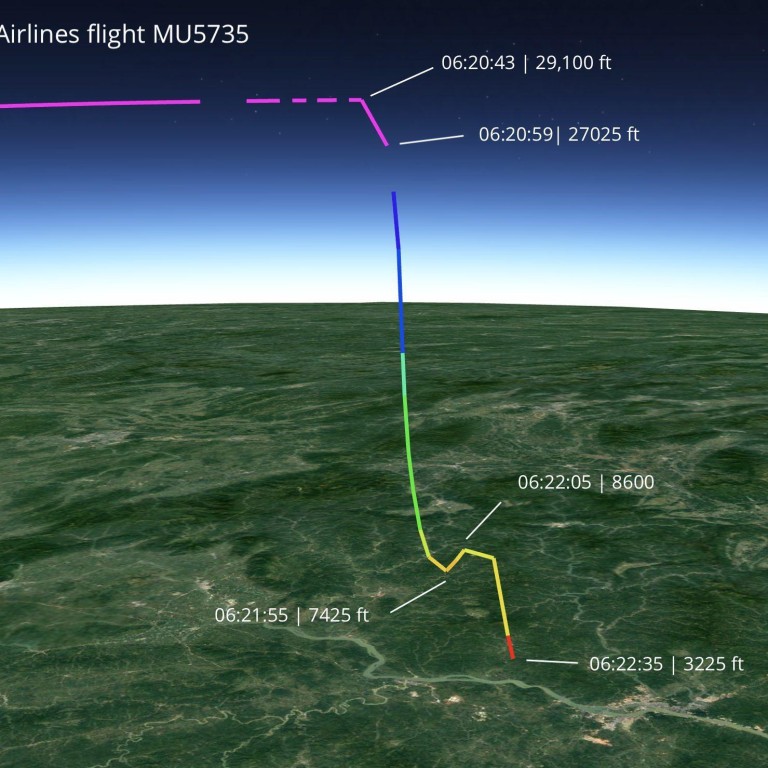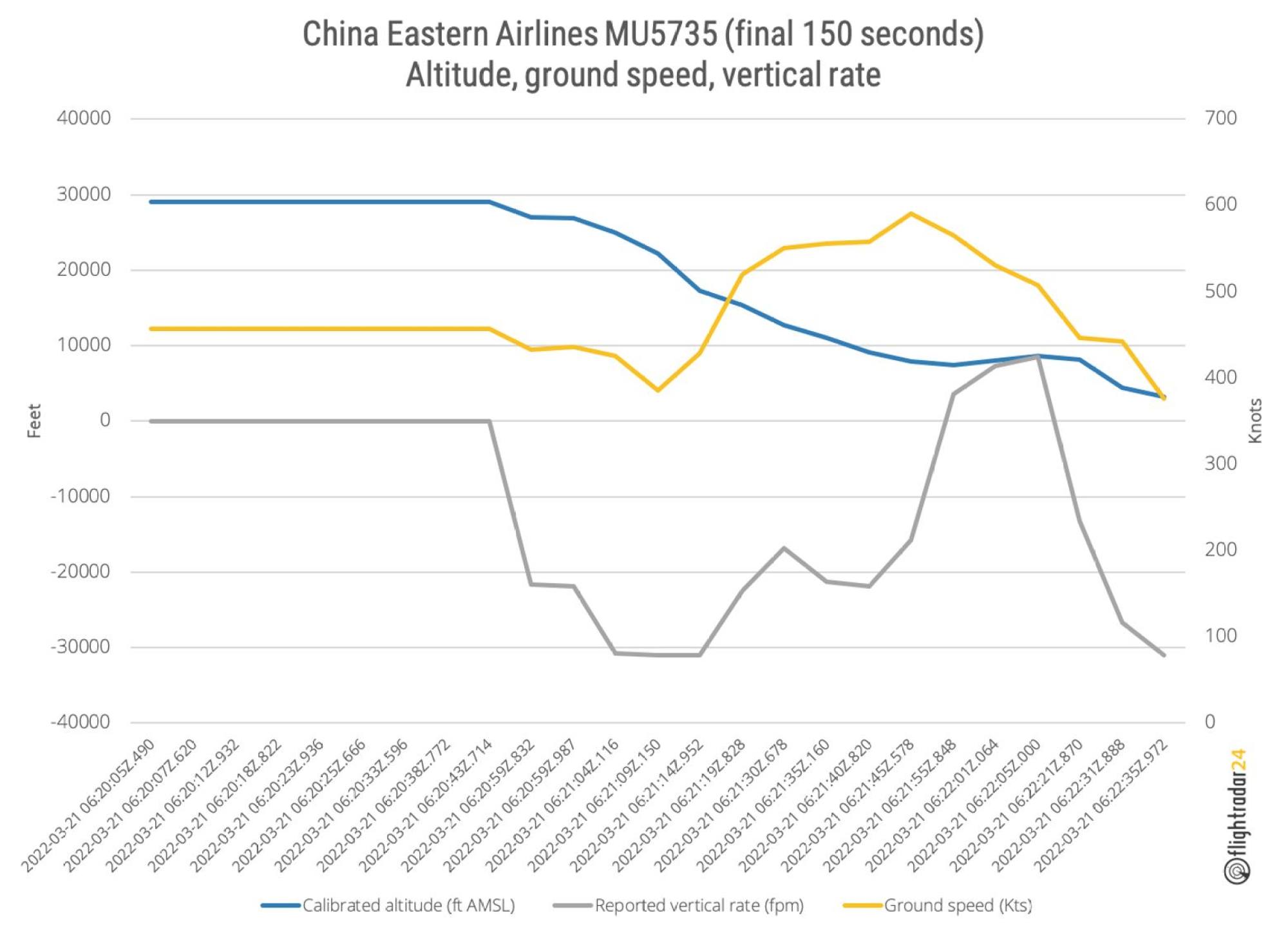
China Eastern Airlines flight MU5735: data suggests plane pulled out of first dive before another sent it crashing
- Data provided by FlightRadar24 depicts apparent battle to control the doomed plane, as initial dive stopped 7,425 feet above the ground
- After climbing briefly, a second high-speed dive began, sending the plane into the ground 30 seconds later
Flight data provided by an air traffic monitoring service has depicted a battle for control of China Eastern Airlines flight MU5735, suggesting the plane pulled out of a 22,000 foot nosedive and briefly started climbing before a second dive sent it crashing into the ground.
No survivors have been found in the wreckage of the Boeing 737-800 that crashed on Monday in the Guangxi Zhuang autonomous region. There were 132 people aboard.
The data published by FlightRadar24 suggests the plane was at an altitude of 29,100 feet when it went into a high-speed dive at 2:20.43pm, losing altitude at a maximum rate of about 31,000 feet per minute (348 mph or 560km/h).

Twenty seconds into the dive, the rate of descent slowed, and over the next 45 seconds the dive was further arrested until the plane levelled off 7,425 feet above the ground. It then began climbing.
But respite from the unfolding disaster was apparently brief. About 15 seconds later, at 8,600 feet, the plane went into a second dive, the data suggests.
Experts study video and flight data seeking clues into China Eastern crash
About 30 seconds later the plane slammed into the ground, in a wooded area of Teng county, near Wuzhou city. The final piece of data from the plane’s computers was sent at 2:22.35pm at an altitude of 3,225 feet.
Video footage widely circulated on Chinese social media appeared to show the plane in a near-vertical dive.
In a blog post, Sweden-based FlightRadar24 said its data came “directly from the aircraft’s computers and is the rate of change based on the aircraft’s sensors”.
FlightRadar24 said it collects raw data from aircraft roughly twice per second.

